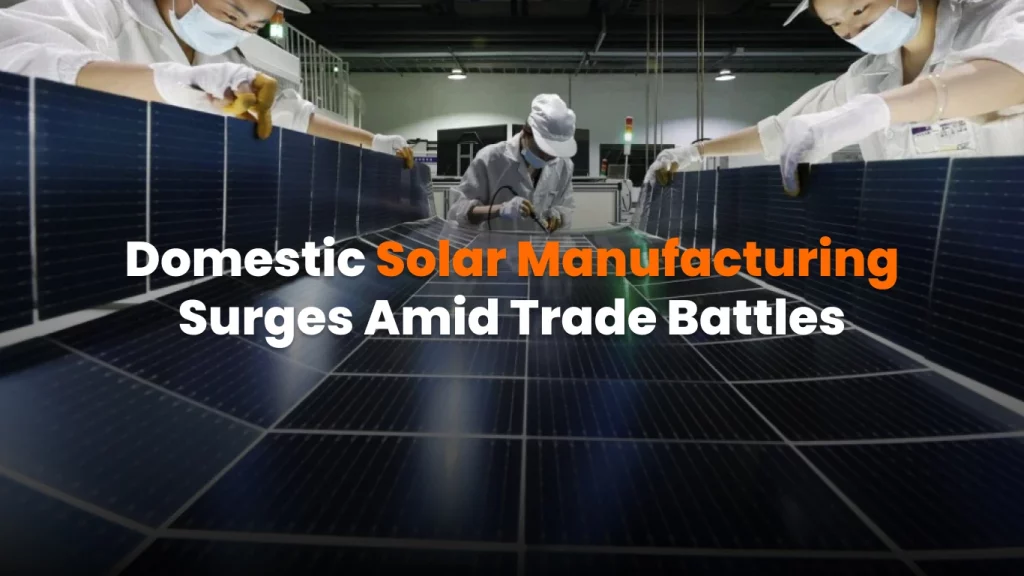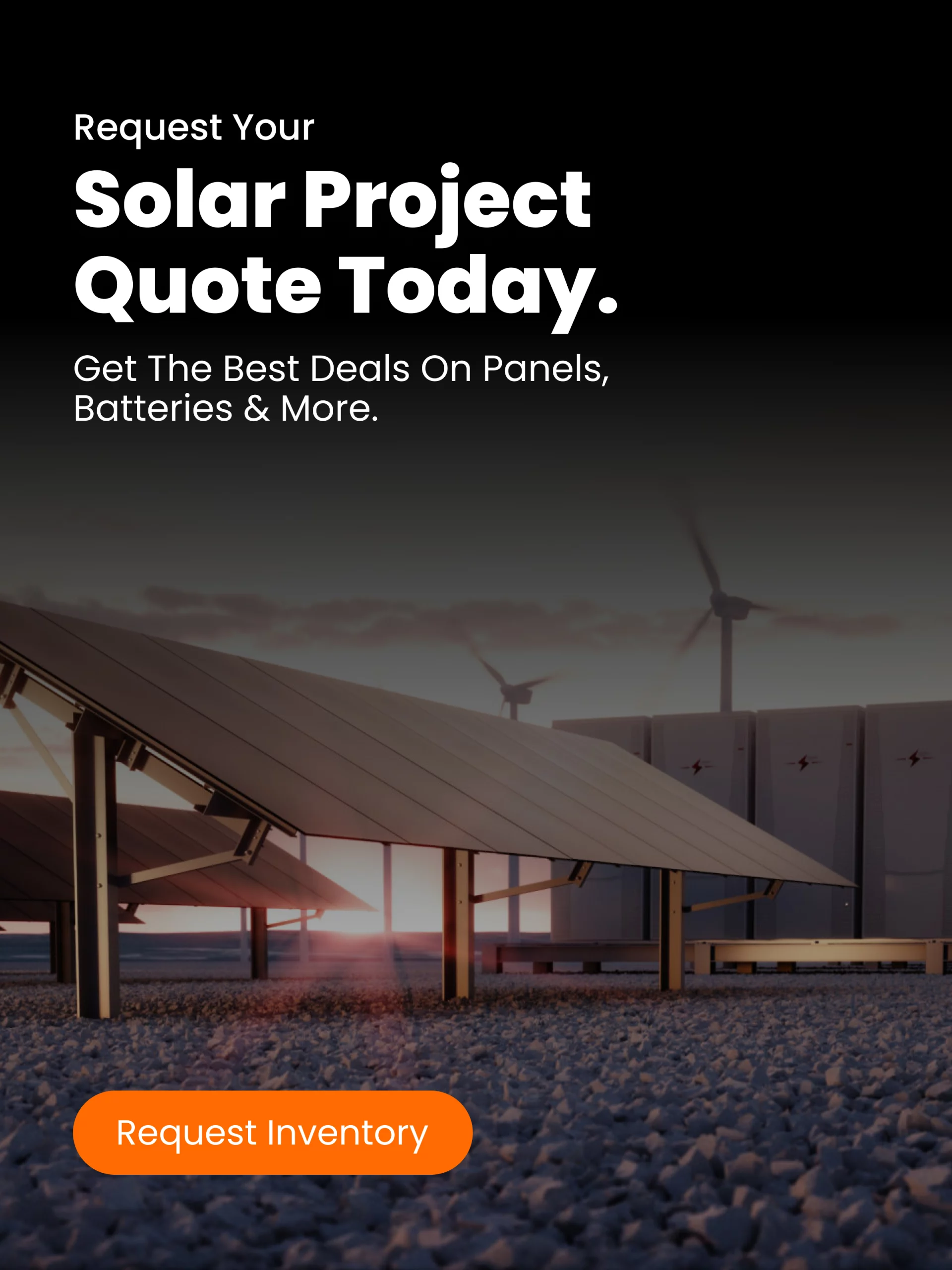Introduction
The U.S. solar manufacturing landscape in September 2025 is a tale of two dynamics: unprecedented domestic growth spurred by policy incentives, and intensifying trade battles reshaping global supply chains. On one hand, factories are springing up nationwide thanks to the Inflation Reduction Act (IRA) and related incentives, significantly expanding American capacity for panels, cells, and components. On the other hand, new tariffs and import probes involving China, India, and Southeast Asia are adding uncertainties. This blog explores the latest manufacturing stats, notable new operations, and how B2B solar supply chain players are navigating the shifting terrain.
U.S. Solar Manufacturing – From 8 GW to 56 GW and Counting
Since the 2022 IRA unleashed generous manufacturing tax credits such as the Section 45X credit, the U.S. has experienced a manufacturing renaissance in solar. By June 2025, nearly 100 new solar and storage manufacturing facilities had been announced post-IRA. As a result, U.S. module production capacity jumped from roughly 8 GW per year pre-IRA to 56.5 GW per year by mid-2025, a more than 700 percent increase. This includes new or expanded factories for everything from modules and cells to trackers, racking, and inverters.
Highlights of the Manufacturing Boom
- First Solar’s Alabama plant: In late 2024, First Solar opened a $1.1 billion factory in Alabama, adding 3.5 GW of annual thin-film capacity. Combined with its Ohio plants, First Solar’s U.S. nameplate capacity now approaches 11 GW and is set to reach 14 GW by 2026 with another facility in Louisiana.
- Qcells expansion in Georgia: Hanwha Qcells ramped production at its Dalton plant to over 3 GW annually and began work on a $2.5 billion Cartersville complex. This site will integrate ingots, wafers, cells, and modules, making it one of the most complete solar manufacturing hubs in the country.
- New entrants: International firms and startups are entering the U.S. market. Boviet Solar opened a module plant in North Carolina in spring 2025. TeraWatt announced plans for a new cell factory. Smaller companies are also producing racking, trackers, and raw materials domestically.
Investment by the Numbers
Total announced investment in U.S. solar manufacturing since IRA enactment reached nearly $46 billion by mid-2025. About $9.1 billion worth of factories are already operational, $15.6 billion are under construction, and $21 billion are in development. Many facilities will come online in late 2025 through 2026, meaning a wave of Made-in-USA solar products is imminent. For developers and EPCs, this promises a more robust local supply chain and reduced reliance on imports and volatile shipping costs.
However, industry leaders caution that this momentum depends on stable policy. A potential headwind emerged in mid-2025 with the “One Big Beautiful Bill Act” (OBBBA), which proposes phasing out certain clean energy credits earlier than expected. Manufacturers warn this could undercut the business case for new factories if incentives wane. For now, though, the Section 45X credits remain intact through at least 2030, continuing to underpin manufacturing expansion.
Trade Conflicts and Import Challenges
While U.S. factories grow, trade measures are complicating global supply chains. These actions aim to protect domestic manufacturing but are creating short-term turbulence.
AD/CVD Probe on India, Indonesia, and Laos
In summer 2025, U.S. panel makers filed petitions for antidumping and countervailing duty investigations into imports from India, Indonesia, and Laos. By September, the International Trade Commission found evidence of injury, clearing the way for Commerce Department rulings expected later in the year.
India and Southeast Asia had become key alternative suppliers after tariffs on Chinese-origin panels. If duties are imposed, as they were on Vietnam and Thailand in past cases, modules from these countries could become cost-prohibitive. Developers may need to pivot to U.S., Canadian, South Korean, or other non-tariffed sources. Some firms preemptively stocked inventory or signed agreements with domestic factories under construction to hedge against these trade actions.
“Foreign Entity of Concern” Rules
A new layer of compliance requires projects seeking tax credits to certify that no major components come from countries designated as “foreign entities of concern.” This especially impacts wafers, frames, and upstream inputs historically sourced from China.
In response, companies are localizing more components. Nextracker acquired Origami Solar, a U.S. startup making steel module frames from recycled steel, in a $53 million deal. This move not only reduces reliance on imported aluminum frames but also aligns with compliance rules. More firms are expected to follow with vertical integration or acquisitions to secure local supply of critical hardware.
Tariffs on Chinese Equipment and Materials
Section 201 tariffs on most imported panels remain in place at 15 percent. Additional tariffs on Chinese modules from earlier antidumping cases also continue. Import waivers on Southeast Asian panels expired in mid-2024, meaning duties could return. On top of this, the Uyghur Forced Labor Prevention Act has created bottlenecks for polysilicon imports from Xinjiang. The net effect is clear: importing panels is complex and risky, driving developers toward domestic options despite higher upfront costs.
Outlook – Opportunities and Challenges for Supply Chain Players
- For Manufacturers: These are boom times for U.S.-based producers. Demand is high, and developers are chasing IRA domestic content bonuses that provide a 10 percent ITC uplift. However, with dozens of factories in the pipeline, competition will increase. The best strategy is to secure long-term contracts with developers and distributors, emphasize “American-made” credentials, and invest in upstream capabilities to reduce import dependencies.
- For Developers and EPCs: Planning must be nimble. Module prices and availability may fluctuate due to trade rulings. Building relationships with new U.S. manufacturers is wise, even at modest premiums, as domestic products can qualify for incentives and avoid tariff risks. EPCs may need to adjust designs to accommodate new panel formats and components.
- For Distributors: Intermediaries play a key role in smoothing the transition. Stocking tariff-free products and helping customers document compliance is vital. Platforms like Sunhub are already curating “Domestic Supply” categories for modules, inverters, and racking to simplify procurement.
Conclusion
The solar manufacturing and supply chain landscape in late 2025 is dynamic but trending toward a stronger domestic foundation. The U.S. is on track to bring tens of gigawatts of new panel capacity online in the next 1–2 years, which could stabilize supply and eventually lower costs. In the short term, trade conflicts and compliance requirements add complexity. Companies that adapt quickly, diversify suppliers, and secure domestic contracts will thrive. The industry’s direction is clear: a more resilient, American-built solar supply chain is taking shape, designed to last.




